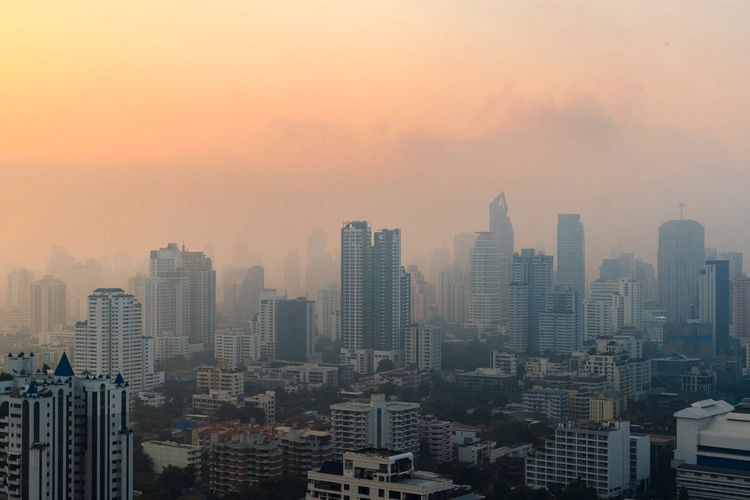
Discover the ‘air quality stripes’ of major cities in all corners of the globe, revealing pollution trends since the Industrial Revolution
By
For the first time, scientists have graphically illustrated air pollution trends of a major air pollutant known to affect human health, across every capital city of each nation worldwide.
Inspired by the climate warming stripes images, researchers at the University of Leeds, the University of Edinburgh, North Carolina State University, and the UK Met Office created an illustration to plot the trends in outdoor concentrations of particulate matter – a mixture of tiny liquid or solid particles including soot, dirt, dust or smoke – found in the atmosphere.
This particulate matter – also known as PM2.5 – can come both from natural sources such as volcanoes and deserts but is also produced by human activities, including cars, climate change-induced fires and domestic burning. Inhaling PM2.5 can cause breathing problems and an increased risk of developing cancer and many other diseases, from Alzheimer’s to diabetes.
South America & North America air pollution trends
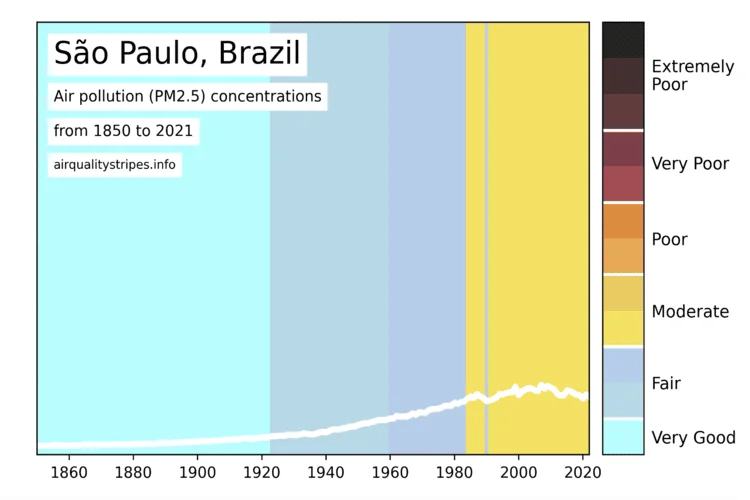
The lightest stripes in the graphics illustrate pollution levels that meet the World Health Organisation Air Quality Guidelines – introduced in 2021 – and all other colours exceed these guidelines.
Using data from computer simulations and satellite observations, researchers were able to track global air pollution trends from the beginning of the Industrial Revolution. The study found that a substantial reduction in particulate matter across most of Europe – especially Western Europe – due to stricter air quality regulations and technological advancements.
Elsewhere, in Central Asia and Africa, air pollution is worsening due to rapid urbanisation, industrial growth and limited regulations.
‘The images show that it is possible to reduce air pollution; the air in many cities in Europe is much cleaner now than it was 100 years ago, and this is improving our health, said co-director of the project Dr Kirsty Pringle. ‘We really hope similar improvements can be achieved across the globe.’
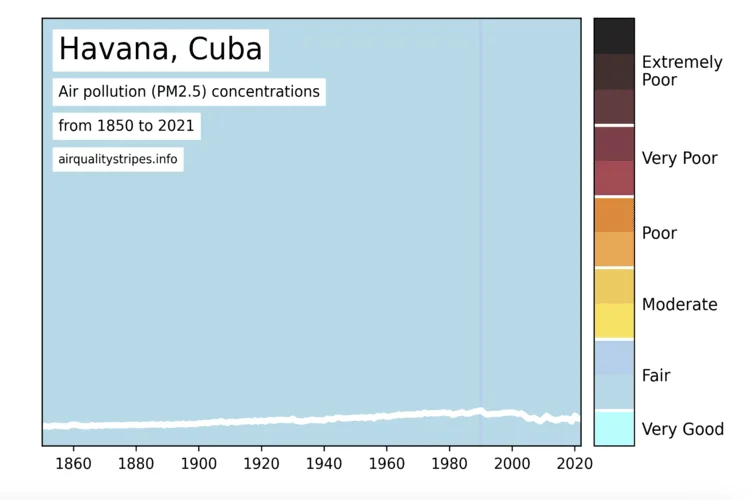
The WHO recommends that he annual average concentration of PM2.5 should not exceed a concentration of 5 micrograms per cubic meter air (5 ug/m3). Currently, 99 per cent of the world’s population live in areas that have concentrations above this.

Europe
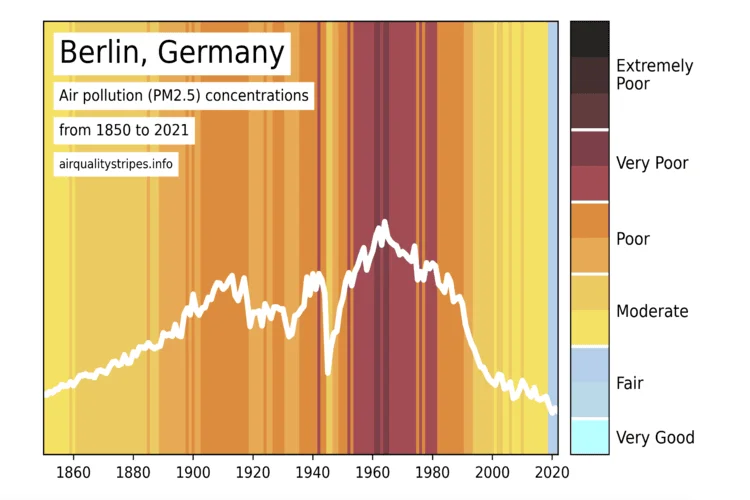


Australia & Oceania


Asia
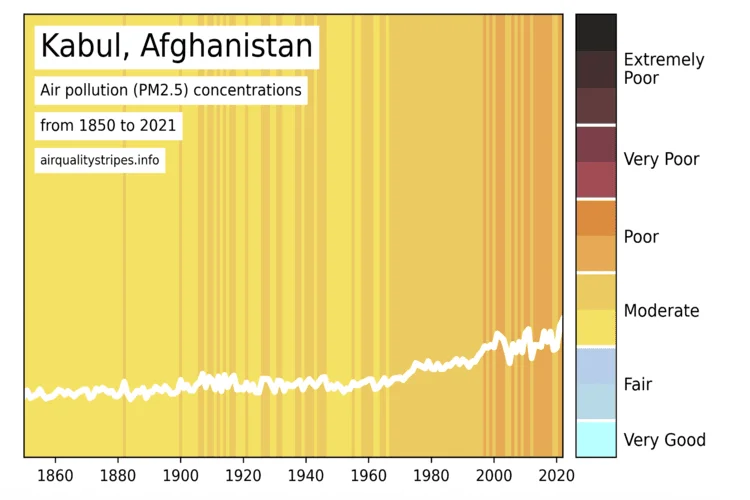

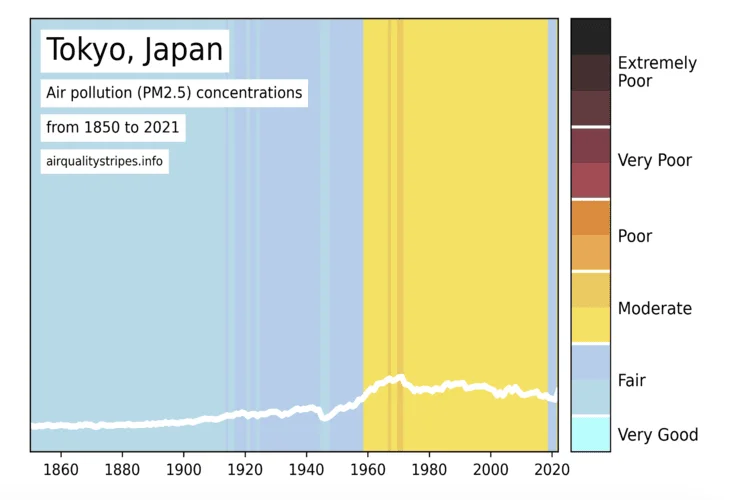

Africa

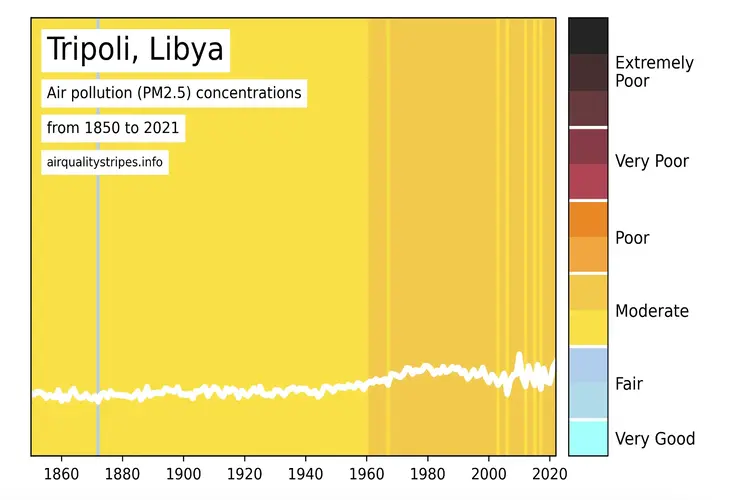

To see further images of global air pollution trends, visit the Air Quality Stripes webpage here.




